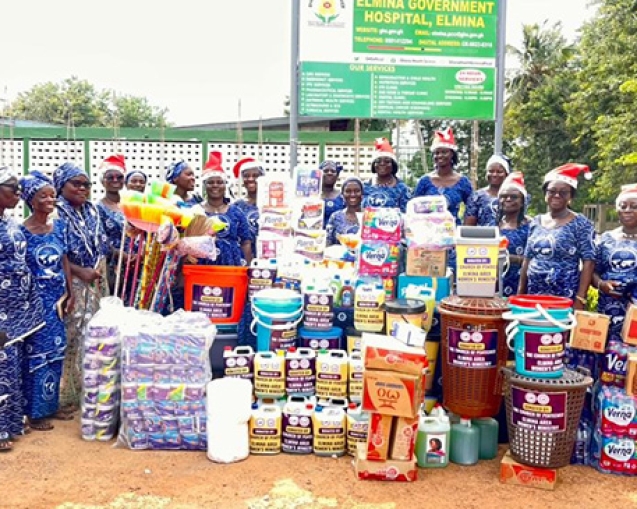Humanity is now facing the ravages of two global pandemics raging simultaneously; namely, HIV/AIDS and COVID-19. Global attention seems to have shifted to the COVID-19 pandemic at the expense of other pandemics such as the HIV/AIDS, a concern that has been expressed by many experts, including Magnani et al (2022): “The COVID-19 pandemic has raised concerns as to its impact on other health programs. One such program that appears particularly vulnerable is HIV and AIDS.”
It is against this backdrop that this article discusses the public health responses to the HIV/AIDS menace and the need to check its spread without ignoring that of the COVID-19 pandemic. The discussion in this article is premised on the fact that every pandemic is a critical public health issue which must be combated with vigour until it is entirely eradicated, or humanity develops a cure for it.
A Brief Background to HIV/AIDS
Like most pandemics, information about the origin of HIV is sketchy. Scientists, however, source it to Africa and human contact with chimpanzees around the 1920s (Gallagher, 2014). The disease was recognized as a pandemic in the 1980s with the discovery of the Human Immunodeficiency Virus (HIV) as its causative virus (although many believe its existence predates its discovery) and it has since claimed millions of lives.
In 1981, the disease was discovered in the US among gay partners, making the Center for Disease Control and Prevention (CDC) to name it Gay-Related Immune Deficiency (GRID)because of its prevalence among the gay community at the time (Canadian Foundation for Aids Research [CANFAR], 2022). Later in 1982, the CDC revised its notes and re-named it Acquired Immunodeficiency Syndrome (AIDS), and, in 1984, the Human Immuno-deficiency Virus (HIV) was proved to be the cause of AIDS.
The virus’ rate of spread was so swift that by 1982, it was widespread among all persons using injectable drugs like heroine because of the corporate use of a single injection on many people. Contaminated blood transfusion was another cause for infection. By 1985, scientists had realised that the virus could be transmitted through unprotected heterosexual intercourse making it possible for people to contract the disease through sex.
Unsterile injection or use of sharp medical equipment to pierce patients also spread the virus to people. Other causes of infection were considered such as vertical transmission from mother to child and transfusion of infected blood products. By these developments, it became necessary to fight the spread of the disease through political and scientific means leading to the first international conference on HIV/AIDS organized in 1986 in Georgia, USA.
Discovering of Drugs
In 1988, a great discovery by scientists brought a relief to humanity when news about Anti-Retroviral Drugs, azidothymidine (AZT) was approved for use by the US Food and Drugs Administration. Afterwards, scientists have discovered many other drugs. Although these medicines are not curative of the virus, they have the potential to help reduce the rate of transmission and also prolong and improve the quality of life of patients as long as they continue to use them.
In December of the same year, the first World AIDS’ Day was celebrated amidst the alarming infection of the disease. The situation was so precarious that by 1990, the worldwide infection rate was around 10 million people and by 2000, an estimated number of 33 million people were living with the pandemic.
Critical Interventions
It is felicitous to say that since the declaration of the HIV/AIDS as a global pandemic, world leaders, medical and the scientific community have responded to the onslaught of the HIV/AIDS pandemic with the alacrity it required and put in place stringent measures to address the condition. Countries around the world, including African nations had their own robust way of dealing with it.
In Ghana, public education about the devastating effect of the pandemic was common place, in fact, in all our institutions, including faith-based organizations. The establishment of the Ghana AIDS Commission in 2002 and subsequently by the Ghana AIDS Commission Act 2016, Act 938 of Parliament, to deal with the HIV/AIDS pandemic is a testament of Ghana’s effort in fighting the rapid spread of the disease.
Forty-One Years Celebration of HIV/AIDS
Having been around for the past 41 years, HIV/AIDS may now be considered a quadragenarian pandemic; the world has been living with it without a successful cure or a viable vaccine to stop its spread.
Despite advances in our scientific understanding of HIV and its prevention and treatment as well as years of significant effort by the global health community and leading government and civil society organizations, too many people with HIV or at risk for HIV still do not have access to prevention, care, and treatment, and there is still no cure (Global Statistics, 2022).
Why is the production of a potent HIV/AIDS vaccine taking so long, compared to the swiftness with which vaccines for other pandemics were discovered? It took the scientific community less than two years to develop vaccines for Ebola and COVID-19, yet HIV/AIDS, which has claimed many lives over the past 41 years had no viable cure till date. Of great public interest is the realisation that even public education about the pandemic is declining. What plausible reasons could the scientific community advance for these obvious laxities?
COVID-19 and HIV/AIDS
About 445,096,612 people have been infected with the COVID-19 virus recording 5,998,301 deaths as at March 6, 2022 (World Health Organisation, 2022). Conversely, an estimated 79.3 million people have contracted the virus “and 36.3 million people have died of AIDS-related illnesses” (Global Information and Education on HIV and AIDS, 2022) in the past 41 years.
Although the infection rate has reduced drastically over the years, HIV/AIDS continues to have a disproportionate toll on the lives of humanity to the extent that “in 2020 an estimated 37.7 million people were living with the HIV virus (including 1.7 million children), with a global HIV prevalence of 0.7% among adults. Around 16% of these people (6.1 million) are not aware that they have the virus” (UNAIDS in Global information and education on HIV and AIDS, 2021).
The World Health Organization (WHO) (2021) admits that “HIV/AIDS remains one of the world’s most significant public health challenges, particularly in low-and middle-income countries.” The organization warns that the global community would have “to redouble our efforts to avoid the worst-case scenario of 7.7 million HIV-related deaths over the next 10 years”. This report presupposes that the world may slack into an alarming HIV-related condition if stakeholders do not step up efforts in combating the pandemic.
The WHO (2021) attributes the increasing new HIV infection to “service disruptions during COVID-19, and the slowing public health response to HIV.” For example, WHO (2021) reports that 37 countries in Africa suffered “disruption in antiretroviral therapy
services caused by COVID-19 in March 2021.” This concern is corroborated by Booston et al (2021), “The COVID-19 pandemic is impacting HIV care globally, with gaps in HIV treatment expected to increase HIV transmission and HIV-related mortality”.
The critical concern is that there are two dangerous pandemics raging and devastating the world, and there is, therefore, the need to pay equal attention to them. As indicated earlier, while COVID-19 has claimed more than 5.9 million, HIV/AIDS has killed 36.3 million people and still counting.
Although WHO recommends for every person who may be at risk of HIV infection to have access to testing for the virus, to what extent is this directive being enforced and how available are the testing kits to the average person in society? Sadly, a cursory observation shows that the public education about HIV/AIDS has drastically reduced and needs to be revived.
The Ravages of HIV/AIDS Are Ongoing
An urgent attention to HIV/AIDS is still very necessary. Its devastating effect must be a burden to society and the following information affirms this claim:
It’s one of the largest killers globally; but for some countries – particularly across Sub-Saharan Africa, it’s the leading cause of death.… For countries in Southern Sub-Saharan Africa, deaths from HIV/AIDS are more than 50% higher than deaths from heart disease, and more than twice that of cancer deaths (Roser and Ritchie, 2019).
A report on a number of worldwide deaths in 2019 published by Global Burden Disease (2021) indicates that HIV/AIDS killed 863,837 people worldwide in 2019 ahead of malaria, hepatitis B, and meningitis. WHO (2022: 20) indicates that by the end of 2021, “diarrhoea diseases, malaria, tuberculosis and HIV/AIDS” remained in the top 10 causes of deaths. According to the organization, despite the decrease in HIV/AIDS prevalence cases thus far, “the current pace of improvements is not rapid enough for many indicators to meet the Sustainable Development Goals (SDG) targets by 2030, because of the rate of new HIV infections being recorded.
In 2020, the estimated number of newly-infected people with HIV were between 1.5 million and 2.0 million (UNAIDS, 2022) and this suggests that the HIV/AIDS pandemic is still a serious public health issue that the world must pay much attention to. For example, some reports suggest that Ghana lost 14,181 people to the HIV/AIDS pandemic in 2020 (NACP, 2019a, in Institute of Statistical, Social and Economic Research [ISSER], College of Humanities, University of Ghana, 2020:1). This figure is far more than COVID-19 deaths of 1,442 since its first reporting in Ghana in 2020.
Why is it taking a long period to eradicate the spread of HIV/AIDS pandemic in the world? The ISSER observes that, “complacency resulting from reduction in HIV infection rates from past years, the notion that HIV is no longer a threat, and the societal belief that the virus is non-existent” are among other factors affecting the vigorous combat against the HIV/AIDS pandemic in Ghana.
While it is a positive sign to celebrate the decline of the virus, the discussion so far indicates that it is still active and remains a dangerous pandemic in human history. Studies conducted in England and South Africa concluded that “the risk of dying from COVID-19 among people with HIV was double that of the general population” (UNAIDS, 2022).
The challenge now is that humanity is caught up in the center of two dangerous pandemics, HIV/AIDS and COVID-19 of which the former tends to accelerate the mortality rate of the latter among those with comorbidity. Thus, it is very important to deal equally with these two pandemics as a major public health issue of our time.
Conclusion
It can be noticed from this discussion that global leaders, the medical community, and all stakeholders in combating the spread of HIV/AIDS have made some kind of progress in containing the pandemic. That notwithstanding, there are several lingering challenges about the fight against the spread of HIV/AIDS pandemic that need to be addressed.
The advent of COVID-19 teaches a great lesson of how global pandemics are combated with all the energies, financial resources, and any available resources or means to contain it. Many believe that same effort must be applied in our fight against HIV/AIDS pandemic. The world should, however, be reminded that pandemics by their nature are not friendly to human lives and survival; the more a pandemic is allowed for whatever reason to fester, the more it destroys lives.
Therefore, we should be very careful to refrain from advancing any hypothesis that would make us appear apologists of HIV/AIDS, but rather join the campaign against its spread so that together we can eradicate it from the world. The earlier we fight it with the same or even more vigorous approach as we are doing with COVID-19, the better it will be for the survival of humanity.
Therefore, this discussion calls for a revisit by all stakeholders to the fight against the spread of HIV/AIDS on all fronts. If every stakeholder gets involved and there is a concerted global marshalling of resources to address the condition, as we are doing with COVID-19, HIV/AIDS will soon be among the list of pandemics that occurred in history and no longer a threat to public health.
Bibliography
Booston RD, G. Fu, L. MacGregor. 2021. The impact of disruptions due to COVID-19 on HIV
transmission and control among men who have sex with men in China. Accessed from
https://pubmed.ncbi.nlm.nih.gov/33821553, 2022-02-26.
Canadian Foundation for AIDS Research. 2022. History of HIV/AIDS. Accessed online from
https://canfar.com/awareness/about-hiv-aids/history-of-hiv-aids, 2022-02-28.
Gallagher J. 2014. “Aids: Origin of Pandemic ‘was 1920s Kinshasa’”. BBC.
Global information and education on HIV and AIDS. 2020. Global HIV and AIDS Statistics.
https://www.avert.org/global-hiv-and-aids-statistics#footnote1_ot3mcne, 2022-03-01.
Institute of Statistical, Social and Economic Research (ISSER) College of Humanities,
University of Ghana. 2020. Current HIV/AIDS Status, Access to Antiretroviral
Treatment, and HIV-Related Stigma in Ghana. Accessed from
Magnani RJ, Wirawan DN, Sawitri AAS et al 2022. The short-term effects of COVID-19 on
HIV and AIDS control efforts among female sex workers in Indonesia. BMC Women’s
Health. https://bmcwomenshealth.biomedcentral.com/articles/10.1186/s12905-021-01583-z, 2022-03-01.
Max R and Hannah R 2019. HIV/AIDS. Accessed from https://ourworldindata.org/hiv-aids,
2022-02-27.
UNAIDS. 2022. The Global HIV/AIDS Epidemic. Accessed from https://www.hiv.gov/hiv- basics/overview/data-and-trends/global-statistics, 2022-02-28.
UNAIDS. 2021. Global HIV & AIDS statistics — Fact sheet. Accessed from
https://www.unaids.org/en/resources/fact-sheet, 2022-03-05.
WHO. 2019. HIV/AIDS. https://www.who.int/health-topics/hiv-aids#tab=tab_1.
WHO. 2021. HIV/AIDS. https://www.who.int/news-room/fact-sheets/detail/hiv-aids
WHO. 2021. HIV Data and Statistics. https://www.who.int/teams/global-hiv-hepatitis-and-stis-programmes/hiv/strategic-information/hiv-data-and-statistics, 2020-03-06.
WHO. 2021. Update on COVID-19/HIV Service Disruptions, December 2021. Accessed from
WHO. 2021. World Health Statistic 2021. Monitoring Health for the SDGs. Accessed from
https://apps.who.int/iris/bitstream/handle/10665/342703/9789240027053-eng.pdf,
2022-03-06.
Vincent Anane Denteh (Rev.)
Email: vadentcop@gmail.com
© 2022


















